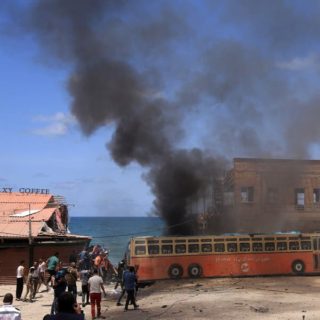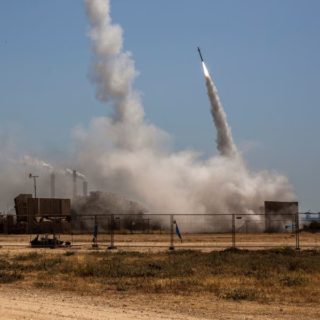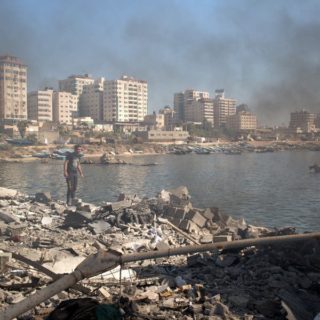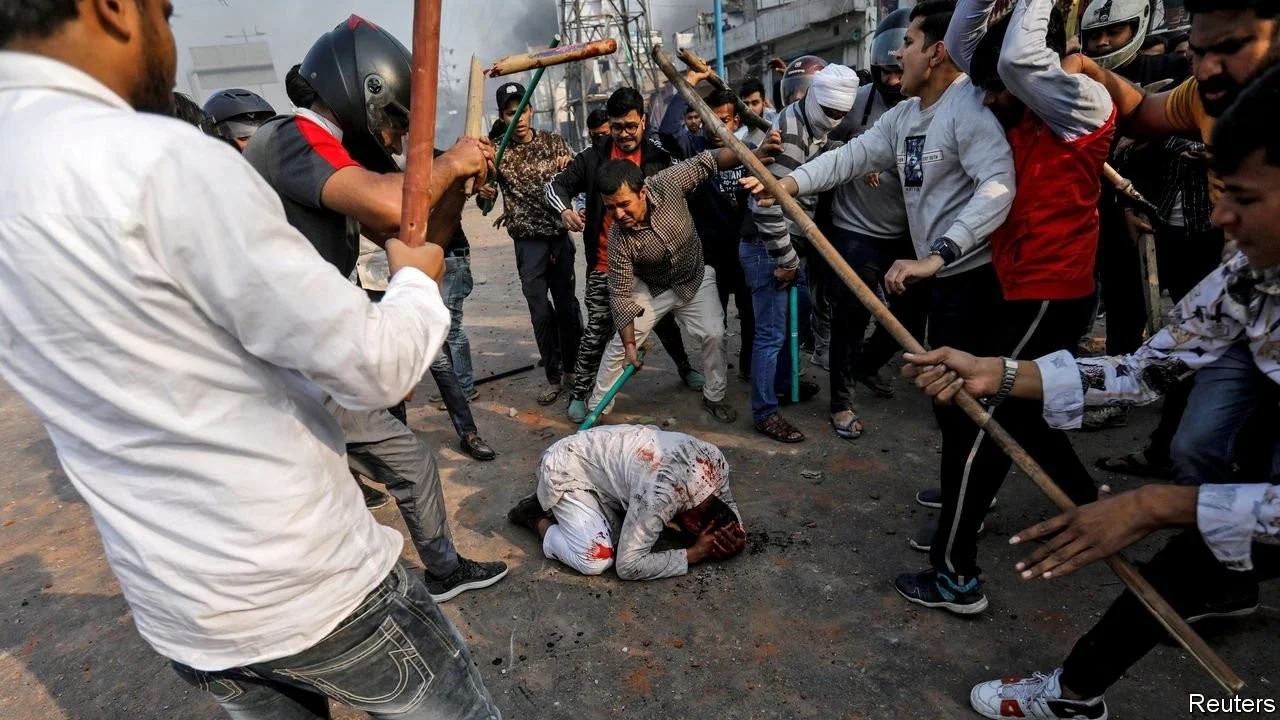As Palestinians and Israelis hunkered down for the second week of an intense conflict, a series of deadly flash points have galvanized both sides in a region where the human cost of war is all too familiar.
Israeli warplanes have bombarded Gaza City, compounding the civilian suffering in the coastal enclave. At the same time, the rocket barrage by Hamas — the militant group that has ruled Gaza since 2007 and does not recognize Israel — continues to take its toll on Israeli cities, including Tel Aviv, the commercial center of the country.
As the civilian casualties grow, the conflict has polarized Israeli society, and the world, like seldom before, and it has spurred unrest within Israel and the occupied territories that has been more intense than any in years.
Here is what is driving the conflict, and its arc so far:
Who is being killed?
Israeli airstrikes and artillery barrages on Gaza, an impoverished and densely packed enclave of two million people, have killed at least 213 people, including dozens of children, between May 10 and Tuesday evening, producing stark images of destruction that have reverberated around the world.

Palestinians carrying the bodies of children killed in an Israeli raid Saturday night in Gaza. Hosam Salem for The New York Times
In the other direction, Hamas missiles have rained over Israeli towns and cities, sowing fear and killing at least 10 Israeli residents, including two children — a greater civilian toll within Israel than during the last war, in 2014, which lasted more than seven weeks.
Israeli strategists and representatives describe the Gaza campaign as being aimed at destroying as much of Hamas’s infrastructure as possible, including the group’s network of rocket factories and underground tunnels — a subterranean transit system that the Israel military refers to as “the metro.”
But Israel has come under increasing international criticism for the growing number of children that have been killed in airstrikes on Gaza. Images of children’s bodies have circulated on social media in recent days, along with the video of a bereft Gaza father comforting his wailing infant — the only one of his five children to survive an Israeli airstrike. Among the deaths have been eight children killed in a single airstrike at a refugee camp.
The conflict has also fueled a humanitarian catastrophe that is touching nearly every civilian in Gaza. Sewage systems have been destroyed, sending fetid wastewater into the streets of Gaza City. A critical desalination plant that helped provide fresh water to 250,000 people is offline, and water pipes serving at least 800,000 people have been damaged. Landfills are closed, with trash piling up. And dozens of schools have been either damaged or ordered to close, forcing some 600,000 students to miss classes on Monday.
On the Israeli side, one of the children killed was a 5-year-old Israeli boy who died after a rocket fired from Gaza made a direct hit on the building next door to his aunt’s apartment, where he was visiting with his mother and older sister.
Some people have been hurt or killed in a burst of unrest in mixed-population cities in Israel, including in Lod, where two people died. And in the occupied West Bank, at least 10 Palestinians were killed by Israeli security forces over the weekend.
How did the current conflict start?
The conflict erupted a week ago, on May 10, when weeks of simmering tensions in Jerusalem among Palestinian protesters, the police and right-wing Israelis escalated, against the backdrop of a longstanding battle for control of a city sacred to Jews, Arabs and Christians.
The root of the latest violence is an intense dispute over East Jerusalem, which is predominantly Palestinian. Protests had gone on for days ahead of a Supreme Court ruling, originally expected on May 10 but then postponed, on the eviction of several Palestinian families from East Jerusalem. Israeli officials described it as a dispute over real estate. Many Arabs called it part of a wider Israeli campaign to force Palestinians out of the city, describing it as ethnic cleansing.
The protests sharply intensified after Israeli police prevented Palestinians from gathering near one of the Old City’s ancient gates, as they have customarily done during the holy month of Ramadan. The police responded on May 10 by raiding the Aqsa Mosque compound, one of Islam’s holiest sites, to keep Palestinian protesters from throwing stones, they said. Hundreds of Palestinians and a score of police officers were wounded in the skirmish.
Militants in Gaza then began firing rockets in Jerusalem’s direction, to which Israel responded with airstrikes on Gaza. Barrages by both sides intensified through the week, as did casualties — though Gazans have suffered a disproportionate number of deaths.
What kind of arsenal does Hamas have?
Despite Israel’s surveillance capability and overwhelming military firepower next door, Palestinian militants in Gaza have managed to amass a large arsenal of rockets with enhanced range in the 16 years since Israel vacated the coastal enclave, which it had occupied after the 1967 war.
Hamas, with help from allies outside Gaza — including Iran, according to Israeli and Hamas officials — has parlayed that arsenal into an increasingly lethal threat. Since the conflict erupted last week, Hamas has launched more than 3,000 rockets toward Israeli cities and towns. The intensity of the barrages has put the Israeli city of Tel Aviv, among others, under greater threat than in previous conflicts.
Beyond tunnels and rockets, Israeli military experts and officials say there is another lesser-discussed and murky threat: clandestine naval commandoes entering or hitting Israel by sea, and waging potential attacks at energy facilities or populated settlements. On Monday, Israel’s military released a video showing Israeli defense forces destroying a vessel that it said was suspected of being on its way to carry out an attack on Israeli waters.
What is the Iron Dome?
As the worst violence in years rages, each night the sky is lit up by rockets fired from Gaza, and by the guided projectiles of Israel’s Iron Dome defense system shooting up to counter them. The images of the tense call-and-response barrages have been among the most widely shared online, even as the toll wrought by the violence becomes clear only in the light of the next day’s dawn.

Israel’s Iron Dome anti-missile system firing on Wednesday to intercept rockets launched from the Gaza Strip. The view is from Ashkelon, in southern Israel. Dan Balilty for The New York Times
The Iron Dome missile defense system became operational in 2011 and got its biggest first test over eight days in November 2014, when Gaza militants fired some 1,500 rockets aimed at Israel. While Israeli officials claimed a success rate of up to 90 percent during that conflict, outside experts were skeptical. The system’s interceptors — just 6 inches wide and 10 feet long — rely on miniature sensors and onboard computer processors to zero in on short-range rockets.
While Israel has suffered casualties and the psychological terror of incoming rockets, the system is clearly winnowing out much of the daily rocket fire.

Pro-Israeli and pro-Palestinian advocates demonstrating last week outside Downing Street in central London. Justin Tallis/Agence France-Presse — Getty Images
How are politics on each side influencing events?
Intense political struggles for leadership of Israel and the Palestinian Authority arepart of the backdrop for the fighting. After four inconclusive elections in Israel in two years, no one has been able to form a governing coalition. But Prime Minister Benjamin Netanyahu, on trial on corruption charges, has been able to remain in office, and hopes that Israelis will rally around him in the crisis.
In Palestinian elections that were recently postponed, Hamas hoped to take control of the Palestinian Authority, and has positioned itself as the defender of Jerusalem. It sought to reinforce that claim by firing rockets after the Israeli police raided the Aqsa Mosque compound in Jerusalem’s Old City.
Since hundreds of thousands of Palestinians fled or were expelled from their homes in 1948, they have been divided not only by geography, but also by lived experience.
But on Tuesday, millions of Palestinian citizens of Israel joined a general strike, as did workers across the occupied West Bank and in Gaza, coming together to protest their shared treatment by Israel, in what many Palestinians described as a rare show of political unity.
How has the international community responded to the conflict?
A growing chorus of international parties has called on Israel, Hamas and other militant groups in Gaza to lay down their weapons.
For the first time, President Biden expressed support for a cease-fire on Monday, but he also reiterated that Israel had a right to defend itself, stopping short of publicly calling on Israel to change its approach.
On Tuesday, European Union foreign ministers overwhelmingly called for an immediate cease-fire in an emergency meeting. All of the member states except Hungary backed a statement that also condemns Hamas’s rocket attacks on Israel, supports Israel’s right to self-defense but cautions that it “has to be done in a proportional manner and respecting international humanitarian law,’’ said the E.U.’s top foreign policy official, Josep Borrell Fontelles.
The United Nations Security Council also worked on Tuesday to devise a common statement condemning the deadly force used by Israel and Hamas militants in Gaza, but apparently could not overcome objections to its wording from the United States, Israel’s most powerful ally.
And in one sign of growing exasperation with Israel, King Abdullah of Jordan on Monday blamed the escalating violence on what he described as Israeli provocations.
King Abdullah’s statements carry weight because his country signed a peace treaty with Israel in 1994, and Jordan is the custodian of the religious site in Jerusalem that houses Al Aqsa, the mosque where tensions between Palestinians and Israelis played an early role in the latest upsurge of violence.
But, there were also subtle signs emerging that Israel and Hamas were privately edging toward a cease-fire, according to three people involved in the negotiations.
How did the last conflict, in 2014, unfold?
In 2014, Israel invaded Gaza after 10 days of aerial bombardment failed to stop Palestinian militants from showering Israeli cities with rockets. The bloody conflict, which lasted for 50 days in July and August, ended in a truce. By then, 2,251 Palestinians, of whom 1,462 were civilians, had died. Israel had lost 67 soldiers and six civilians, according to the United Nations Human Rights Council.
Israeli leaders agreed to to halt hostilities under intense diplomatic pressure and with increasing casualties on both sides. At the time, U.S. Secretary of State John Kerry seemed to calculate that a succession of short truces could be cobbled together to begin unwinding the conflict.

On July 16, 2014, an Israeli airstrike killed three young boys on a beach in Gaza City. Tyler Hicks/The New York Times
Accepting a truce offered Israel an opportunity to thwart the threat of tunnels being used to attack or kidnap its citizens, without risking more of the civilian casualties in the Gaza Strip that were turning world opinion against it.
Hamas, too, faced pressure to accept the truce, not only from international negotiators but from many Palestinians in the Gaza Strip who were suffering under continuous Israeli bombardment and grappling with the devastation and destruction around them.
FEATURED IMAGE: A coffee shop at the edge of the Gaza Strip was targeted by an Israeli aircraft on Monday. Samar Abu Elouf for The New York Times
By Dan Bilefsky/The New York Times









